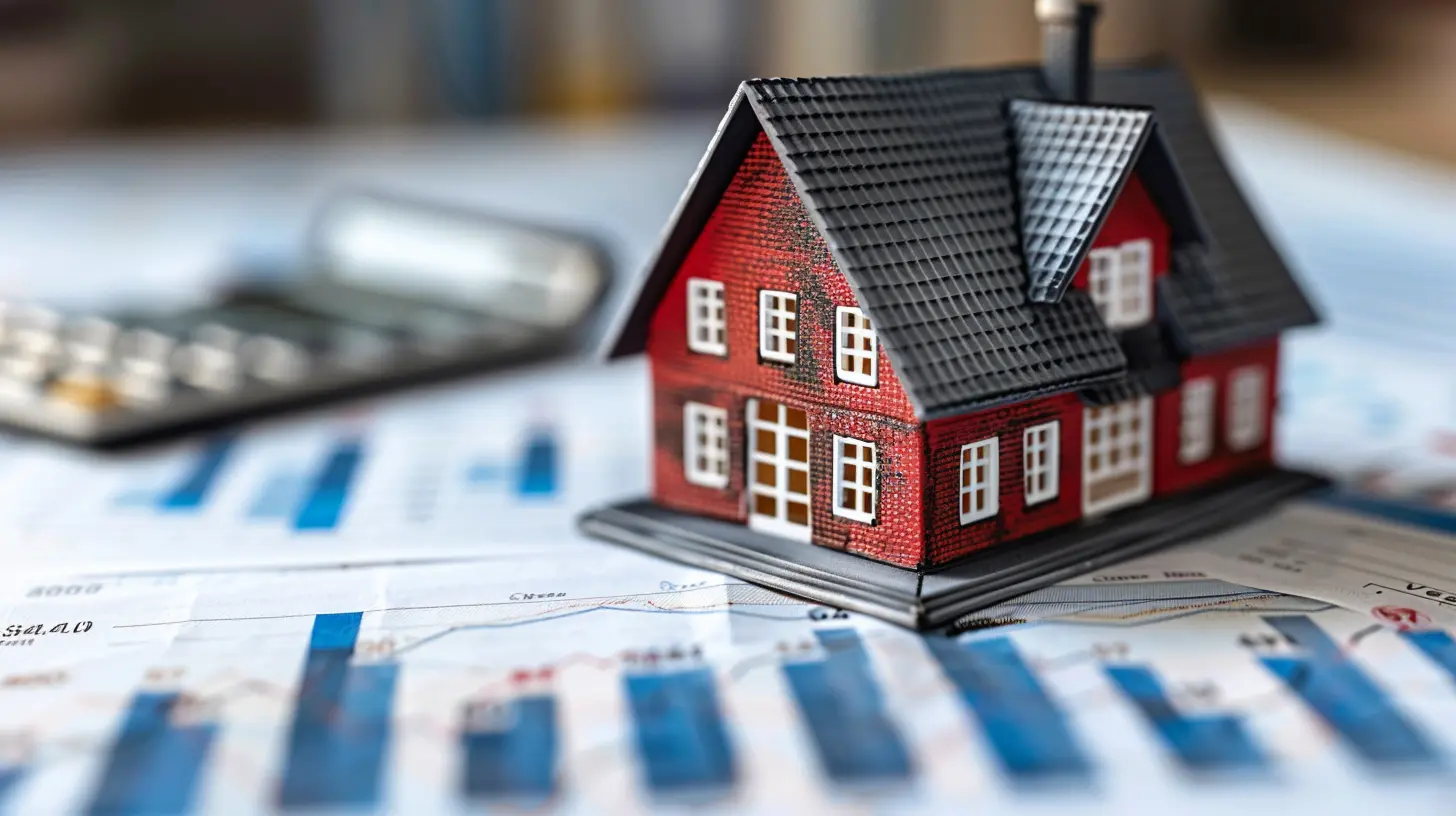A Closer Look at Commercial Real Estate Trends
3 July 2025
Commercial real estate is a dynamic industry that constantly evolves with global economic shifts, technological advancements, and changing consumer behavior. If you're an investor, business owner, or simply someone curious about the future of the real estate market, understanding these trends is essential.
In this article, we'll break down the most significant commercial real estate trends shaping 2024 and beyond. Whether you're looking to invest, lease, or sell, recognizing these trends will give you a competitive edge in the market. 
1. The Rise of Hybrid Workspaces
The traditional office setup is no longer the default. With remote work becoming the norm, companies are rethinking how much office space they truly need. Instead of large corporate offices, businesses are moving towards hybrid workspaces—a mix of remote and in-office work environments.Why Is This Happening?
- Businesses want to reduce costs by downsizing office space.- Employees demand a better work-life balance and flexibility.
- Technology allows seamless remote collaboration.
How It's Changing Commercial Real Estate
- Co-working spaces are booming – Companies are shifting to shared offices instead of committing to long-term leases.- Office vacancies are rising – Landlords must rethink how they utilize space.
- New lease structures – More businesses are opting for short-term leases rather than traditional long-term commitments.

2. Demand for Sustainable & Eco-Friendly Buildings
Sustainability isn't just a trend; it's a necessity. Companies and investors are prioritizing eco-friendly commercial properties to reduce their carbon footprint and attract environmentally-conscious tenants.Why the Push for Sustainability?
- Governments are imposing stricter environmental regulations.- Tenants and employees prefer green buildings that promote health and well-being.
- Energy-efficient buildings lower operational costs.
What It Means for Real Estate Owners
- Investing in LEED-certified buildings (Leadership in Energy and Environmental Design) can increase property value.- Properties with solar panels, energy-efficient lighting, and smart HVAC systems are in demand.
- Investors and developers are prioritizing adaptive reuse—renovating old buildings instead of demolishing them.

3. The Boom in Industrial & Warehouse Spaces
With the rise of e-commerce giants like Amazon, the need for warehouse spaces has skyrocketed. Companies require massive storage facilities to fulfill the growing demand for online shopping.The Driving Forces Behind This Trend
- Online shopping is at an all-time high, fueling demand for distribution centers.- Retailers want to cut shipping times, leading to the rise of urban warehouses.
- Automation and robotics are reshaping logistics, requiring modern industrial spaces.
What It Means for Investors
- Higher returns on industrial real estate compared to traditional retail spaces.- Increased focus on last-mile delivery hubs—warehouses closer to customers.
- Rising land prices in suburban and urban areas due to heightened demand.

4. The Shift in Retail Real Estate
Traditional shopping malls are facing an uphill battle, while experience-driven retail spaces are thriving. Consumers are seeking unique, immersive shopping experiences rather than just brick-and-mortar stores.What’s Changing in Retail?
- The decline of big-box stores as online shopping dominates.- The rise of experiential retail—think pop-up shops, interactive showrooms, and entertainment-based shopping.
- Growth in mixed-use developments—retail spaces integrated with residential and office units to create vibrant communities.
What Landlords and Investors Should Consider
- Transforming vacant retail spaces into mixed-use developments.- Partnering with e-commerce brands for physical pop-up locations.
- Investing in click-and-collect hubs, where online shoppers can pick up purchases.
5. The Growing Popularity of Mixed-Use Developments
People no longer want to commute long hours for work or leisure. Mixed-use developments—where residential, commercial, and office spaces coexist—are becoming a popular real estate model.What’s Driving This Trend?
- Urban dwellers want convenience—live, work, and play in one place.- Cities are encouraging walkable communities.
- The demand for community-centric spaces is on the rise.
Impact on Commercial Real Estate
- More developers are designing properties that combine retail, office, and residential spaces under one roof.- Property values in walkable communities are seeing steady growth.
- Businesses prefer leasing in mixed-use developments to benefit from built-in foot traffic.
6. The Role of Technology in Real Estate
From smart buildings to AI-driven analytics, technology is revolutionizing commercial real estate. Investors, landlords, and tenants now rely on tech to make smarter decisions.Major Technology Trends
- Smart buildings – Features like IoT-enabled lighting, climate control, and security systems improve efficiency.- AI and data analytics – Investors use data insights to predict market trends and select profitable properties.
- Blockchain in real estate – Facilitates smoother and more secure property transactions.
Why This Matters
- Technology helps landlords reduce operational costs.- Smart buildings attract tech-savvy businesses looking for modern office spaces.
- AI-driven analytics assist investors in making data-backed decisions.
7. The Rise of Alternative Real Estate Investments
Investors are looking beyond traditional office and retail properties. Alternative real estate assets like medical offices, senior living facilities, and data centers are gaining traction.Why Are Investors Exploring Alternatives?
- Medical and healthcare real estate is recession-proof—people always need healthcare.- Senior housing is in demand due to the aging population.
- Data centers are critical as cloud computing and AI technologies expand.
What’s Next?
- More funds are flowing into non-traditional commercial spaces.- Investors are seeking long-term stability with properties that provide essential services.
- The commercial landscape is diversifying as asset classes expand beyond offices and malls.
Conclusion
The commercial real estate market is shifting rapidly, influenced by technology, consumer behavior, and economic trends. From hybrid workspaces to sustainable buildings, each transformation presents both challenges and opportunities.If you're an investor or business owner, staying ahead of these trends can help you make informed decisions. What does the future hold? Adaptability will be the key to success in a constantly evolving commercial real estate landscape.
all images in this post were generated using AI tools
Category:
Market AnalysisAuthor:

Camila King
Discussion
rate this article
2 comments
Preston Moses
Navigating the shifting tides of commercial real estate requires both foresight and adaptability. Trends like remote work and e-commerce expansion are reshaping demand. Investors must stay sharp and embrace innovation, as yesterday's insights may not unlock tomorrow's opportunities. Stay ahead or risk being left behind!
November 11, 2025 at 12:49 PM

Camila King
Absolutely! Adapting to trends like remote work and e-commerce is crucial for success in commercial real estate. Staying innovative and forward-thinking will help investors seize new opportunities in this evolving landscape.
Zephyra Chapman
Great insights on the evolving commercial real estate landscape! The analysis of current trends provides valuable guidance for investors and stakeholders navigating this dynamic market. Thank you for sharing!
July 10, 2025 at 2:59 AM

Camila King
Thank you for your kind words! I'm glad you found the insights valuable.


